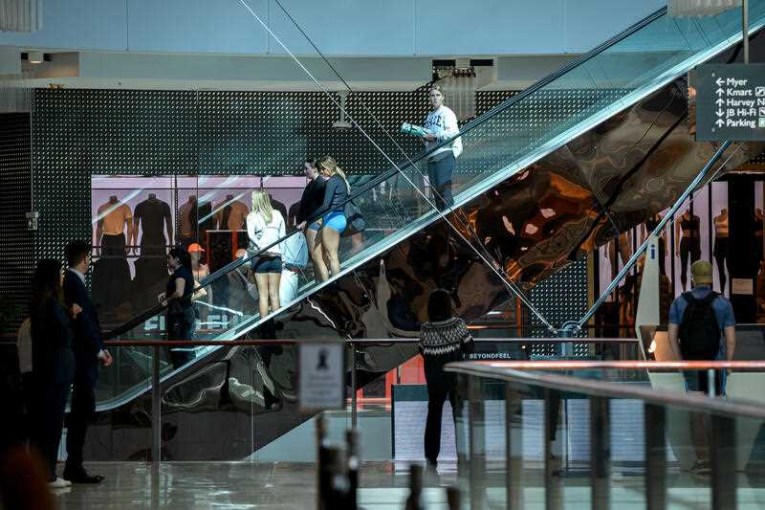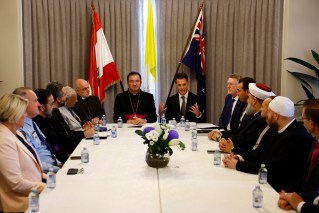Alarming number of homes left uninsurable by our horror summers


Many Australians in bushfire-prone areas will soon be unable to afford home insurance. Photo: The New Daily
Nearly half a million Australians will soon be unable to afford to insure their homes as the climate crisis worsens our bushfire seasons, a report reveals.
Australia’s insurance system requires a massive overhaul before almost 500,000 homes are rendered uninsurable because of the danger of bushfires, the UNSW report states.
“More than 445,000 Australian homes are predicted to be uninsurable within 30 years, with this number rising to 718,000 by 2100,” it says.
Without urgent action, Australia is heading for a similar situation to California, where premiums are five times larger and insurers refused to cover more than 340,000 homes because of the extreme risk of wildfires.
“The risk profile for California and Australia is similarly disastrous,” co-author and professor of political philosophy Jeremy Moss said.

Soon Australians may not be able to afford home insurance, a report warns. Photo: AAP
“At the moment all the risk is placed on the policyholder,” Professor Moss said.
“That is, if your house is a risk area, your premiums will reflect that risk or it might be the case it’s not even worth offering you bushfire insurance.
“That is the case no matter what caused that risk.”
Australians should not be held responsible for the climate risks associated with their homes if the government fails to implement adequate climate change policies, he said.
“The risks of bushfire are well known now. We can’t delay this much longer,” he said.
“I would recommend it to the bushfire commission that we need a government-backed insurance scheme for bushfire-prone properties within the next year.”
Time for a new model
Victoria alone is set to experience more frequent mega-fires according to a report released on Tuesday, and we need a insurance model to reflect the new reality, Professor Moss said.
“We should move to an insurance model that looks more like Medicare than current insurance models,” he said.
“If you have someone who has a high sugar diet, and they get health complications, we will still treat you at the hospital and you will still be covered.”
Currently, about 97 per cent of federal funds spent on disasters are spent after a disaster occurs, he said.
“That’s the other take-home from this report, which is backed up by the Productivity Commission, the government only spend 3 per cent on prevention, and the rest on post-disaster.
“And that’s a bad proportion.”
‘Big, complicated issue’
Home insurance is set to be a hot button issue in the bushfire royal commission, which begins on Tuesday.
Insurance policy officer for Consumer Action Tom Abourizk, says the organisation had been increasingly concerned about this issue.
“Affordability of insurance in regional areas is something we’re concerned about and something that is getting worse and worse over time with climate change and the increasing severity of bushfires,” Mr Abourizk.

Aerial images show the devastation in communities in East Gippsland this year. Photo: AAP
Although it is currently unclear how much premiums will go up by, Dr Mallon said they had heard from charities that some local residents have experienced a 40 per cent increase.
“We have heard from other agencies and charities on the ground of people from areas hit by the bushfires where they haven’t been impacted, they haven’t made a claim but when they’ve gone to renew their policies they’ve been [hit with a] 40 per cent increase,” he said.
“So one of the big risks and COVID-19 only makes this worse, is if they go ‘all right, we’re going to have trouble paying our bills’, you’re probably going to let the insurance premium go.
“Six months later another fire season rolls around and people don’t have insurance.
“It is a big and complicated issue. And the risk increase it is a big problem.”
A Suncorp spokesperson said one bad fire season would not affect the cost of the cover it offered.

Kangaroo Island was badly hit in the fire season. Photo: AAP
“Our home insurance premiums are priced to a number of risk-based factors and incorporate numerous data sources – one single event will not necessarily affect insurance premiums,” the spokesperson said.
In its submission to the commission, the Consumer Action Law Centre has called for an independent inquiry into the cost of insurance because of heightened risks linked to climate change.
The recommendations include the introduction of a price monitor for greater transparency, a standard definition of key terms, and modernising standard cover so it is easy to understand.
Karl Mallon, director of science at Climate Risk, said for insurers to feel comfortable that bushfires can be dealt with the Australian government needed to invest in the fire-fighting capacity.
“Will premiums have to go up? Yes,” he said.
“In summer, is climate change going to have an effect? That’s undisputed now.
“But are the insurers putting up premiums? It’s already happening.
“Is there anything that can be done? Increase in the fire-fighting capacity.
“So when we are going into a bad season we can bring on that demand as needed.”
The other things governments need to start doing is listening to the science, he said.
“I think a lot of loss was avoidable. The parallels with COVID-19 are amazing.
“If you listen to scientists, you can avoid a lot of heartaches.
“But as soon as you say climate it becomes ideological.
“You can throw the scientists out the door.
“Why would you listen to an epidemiologist and not a climate scientist?”








